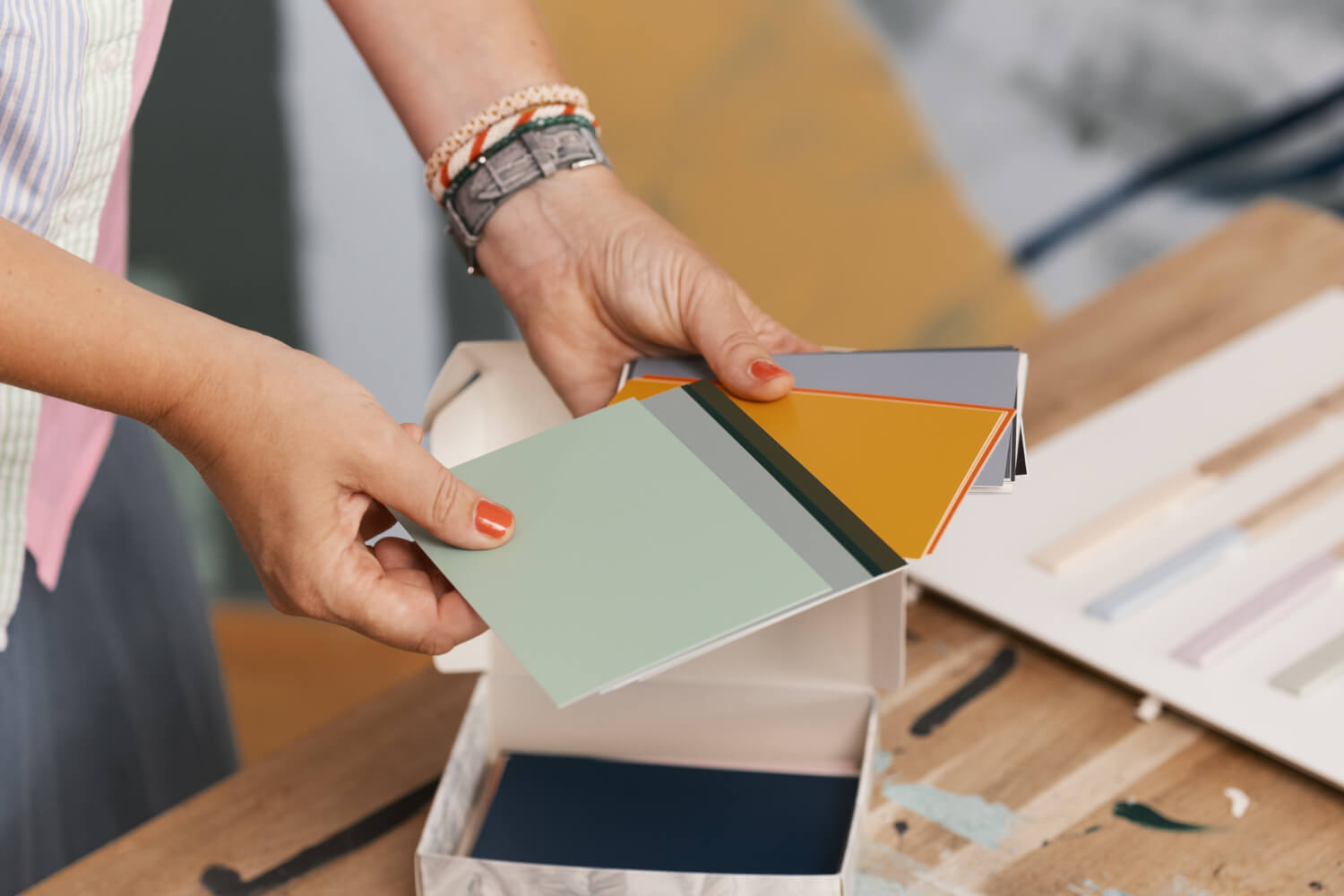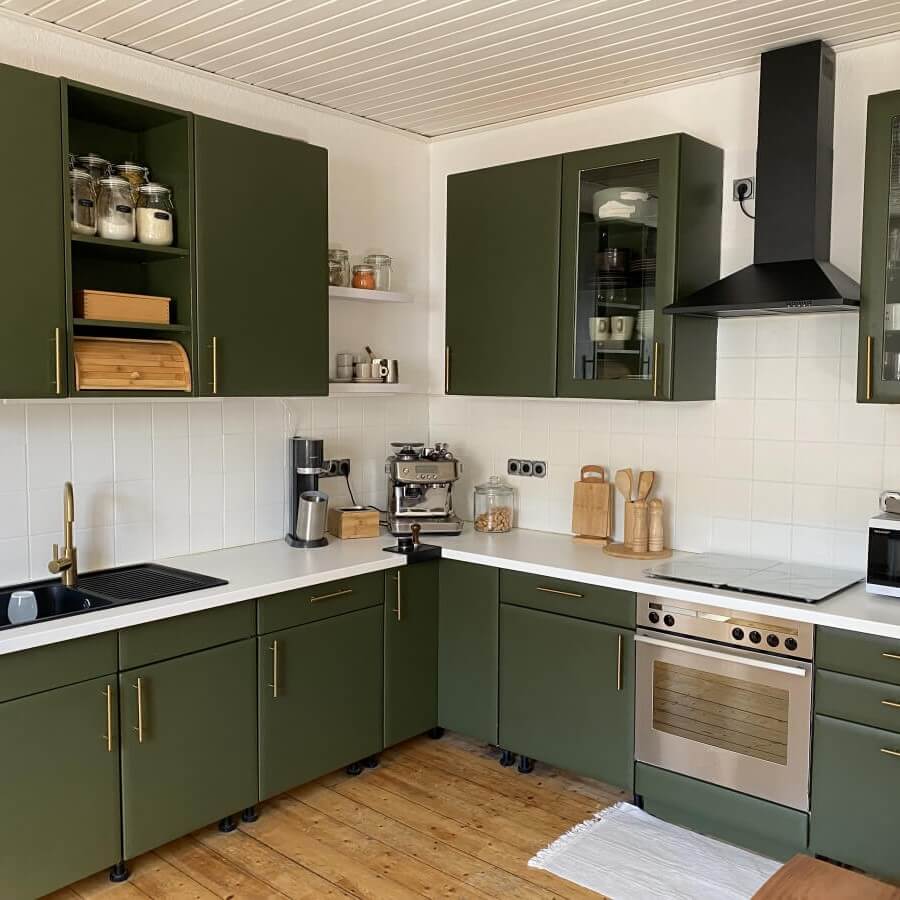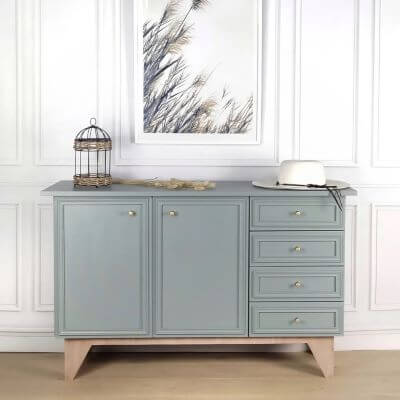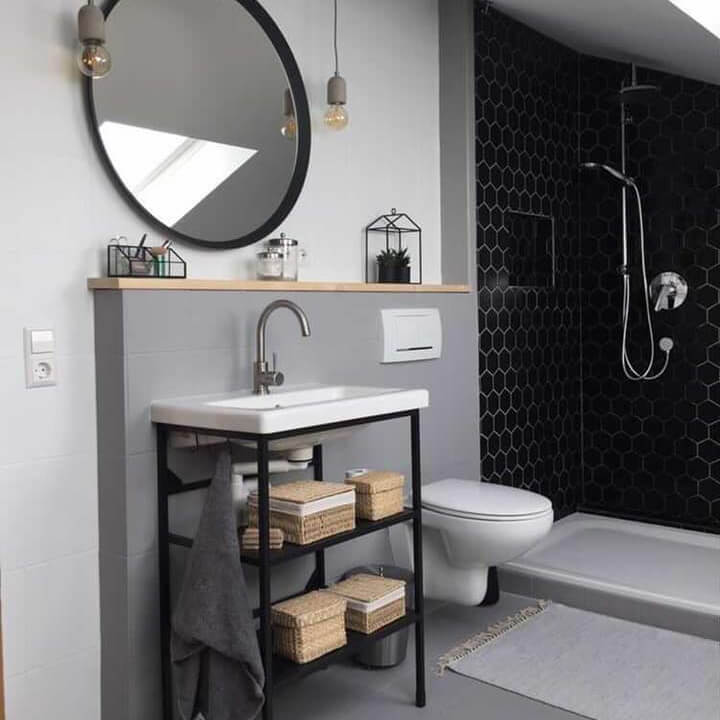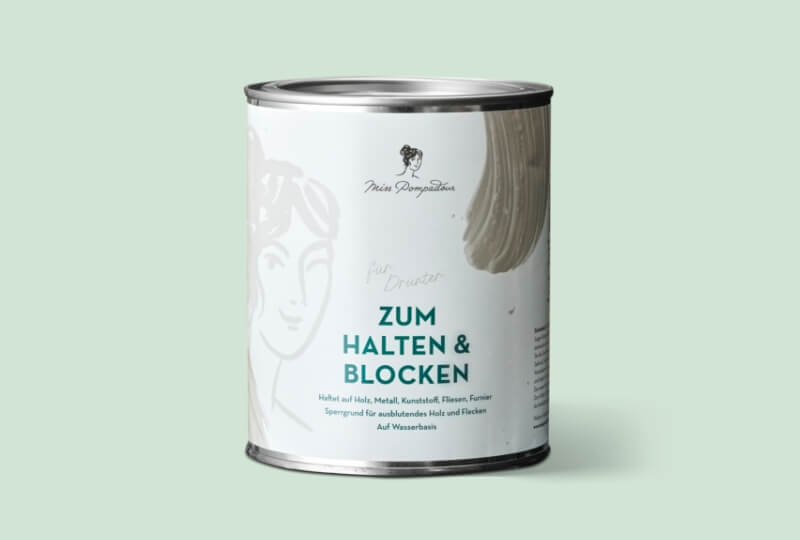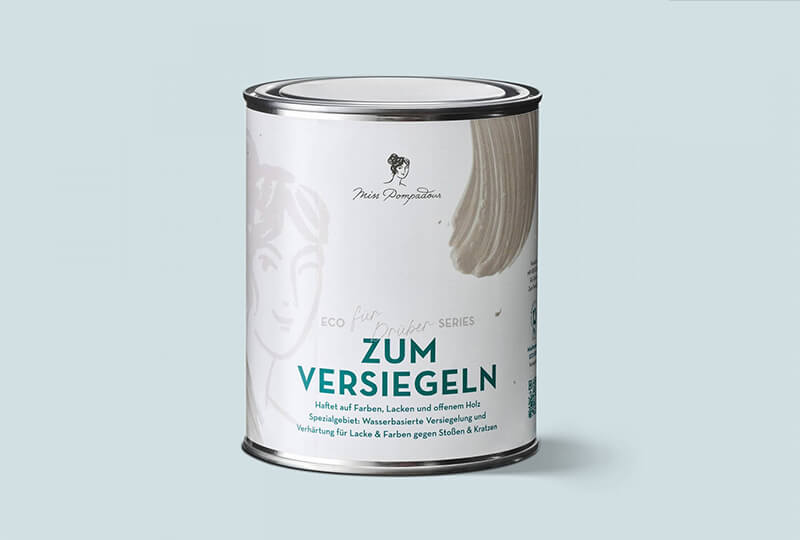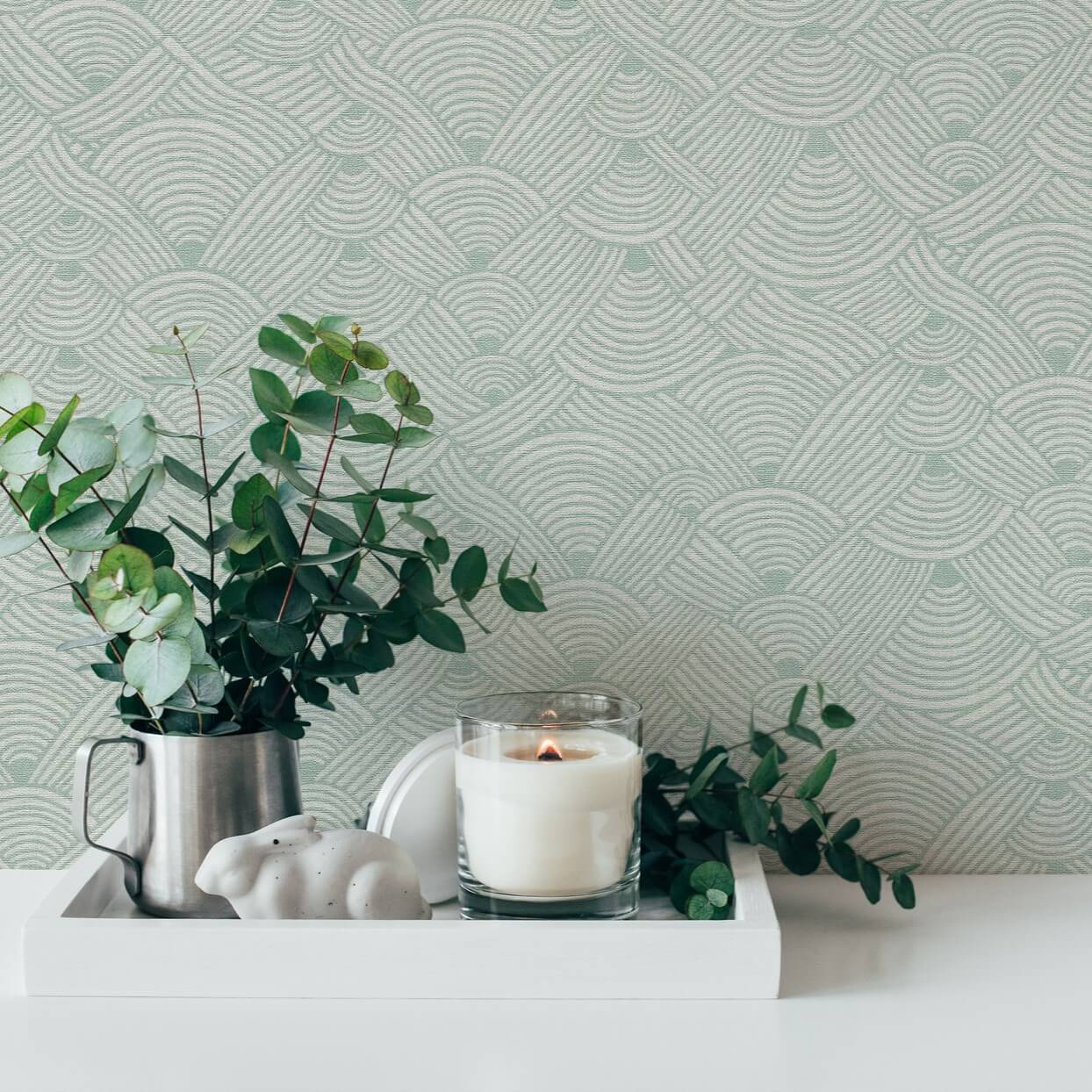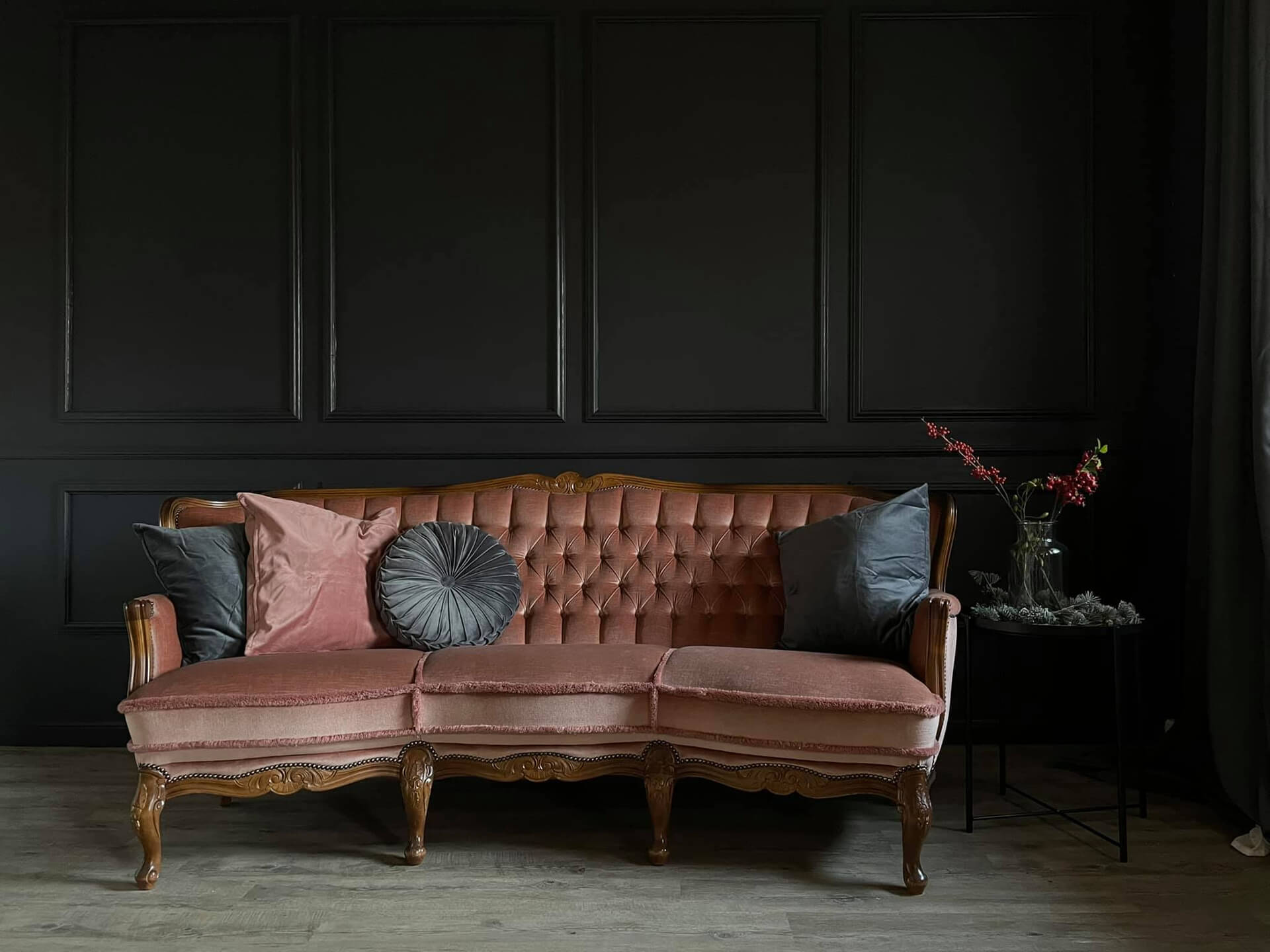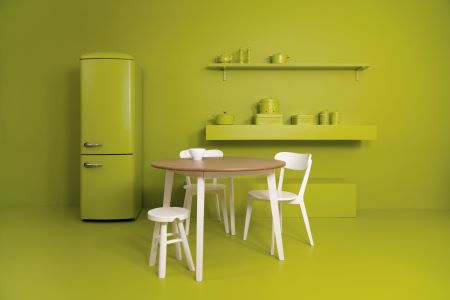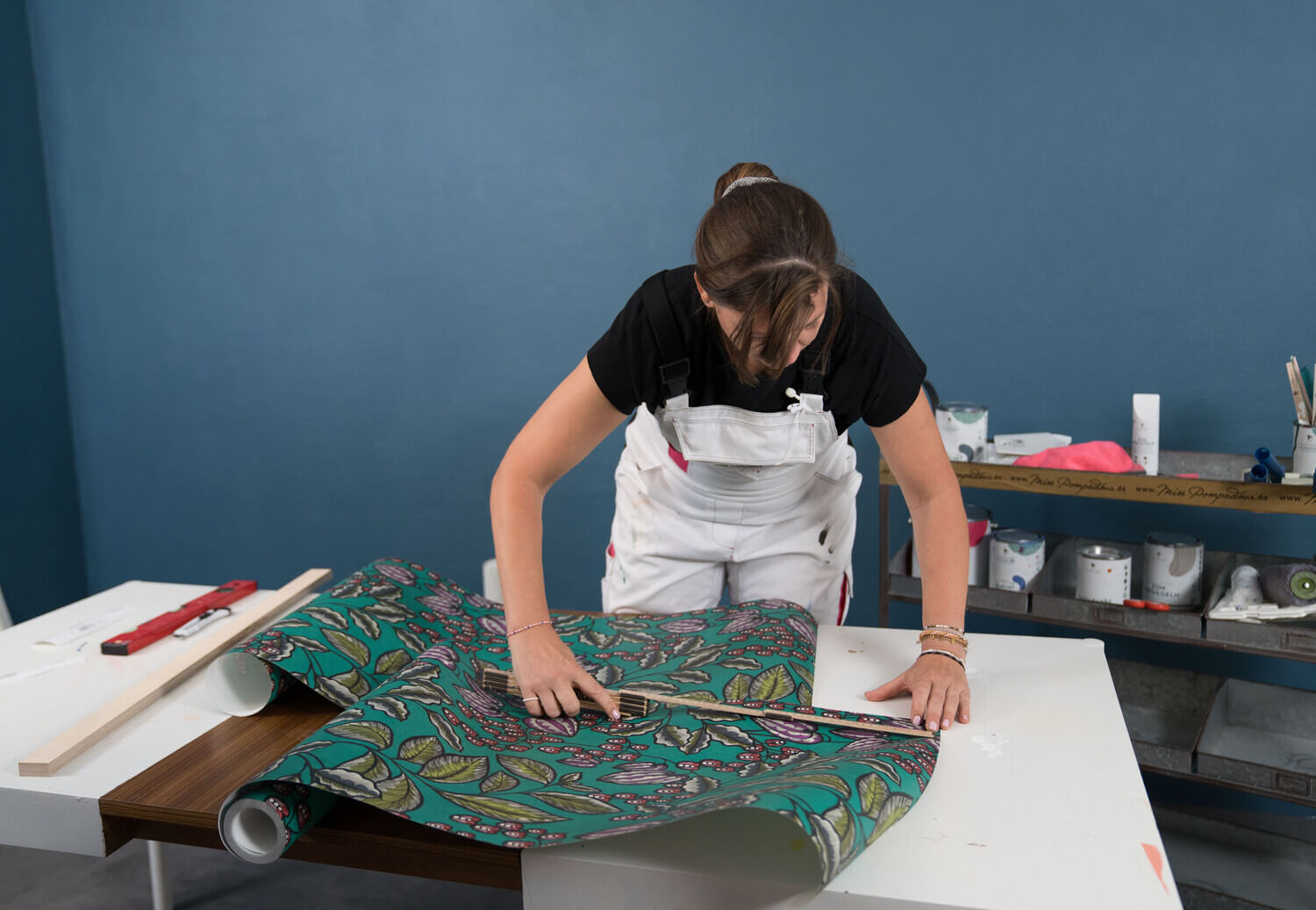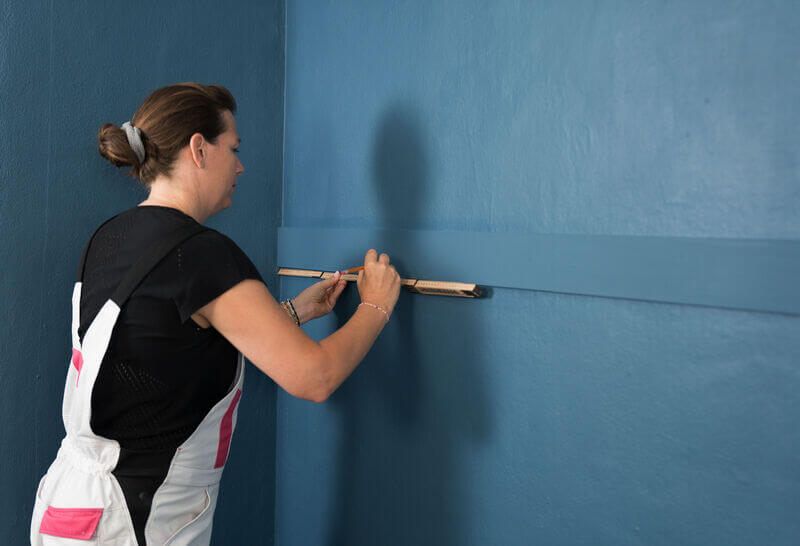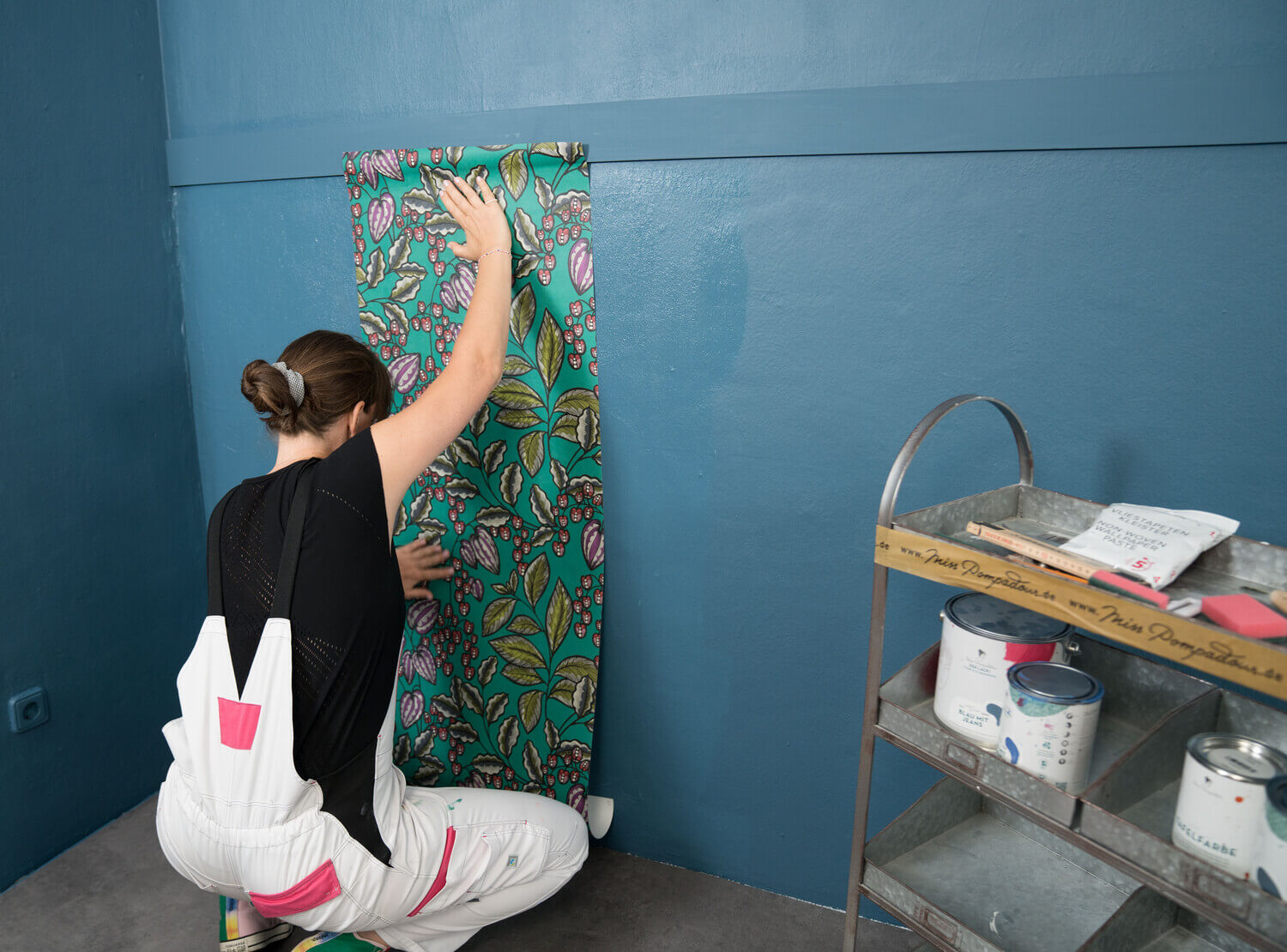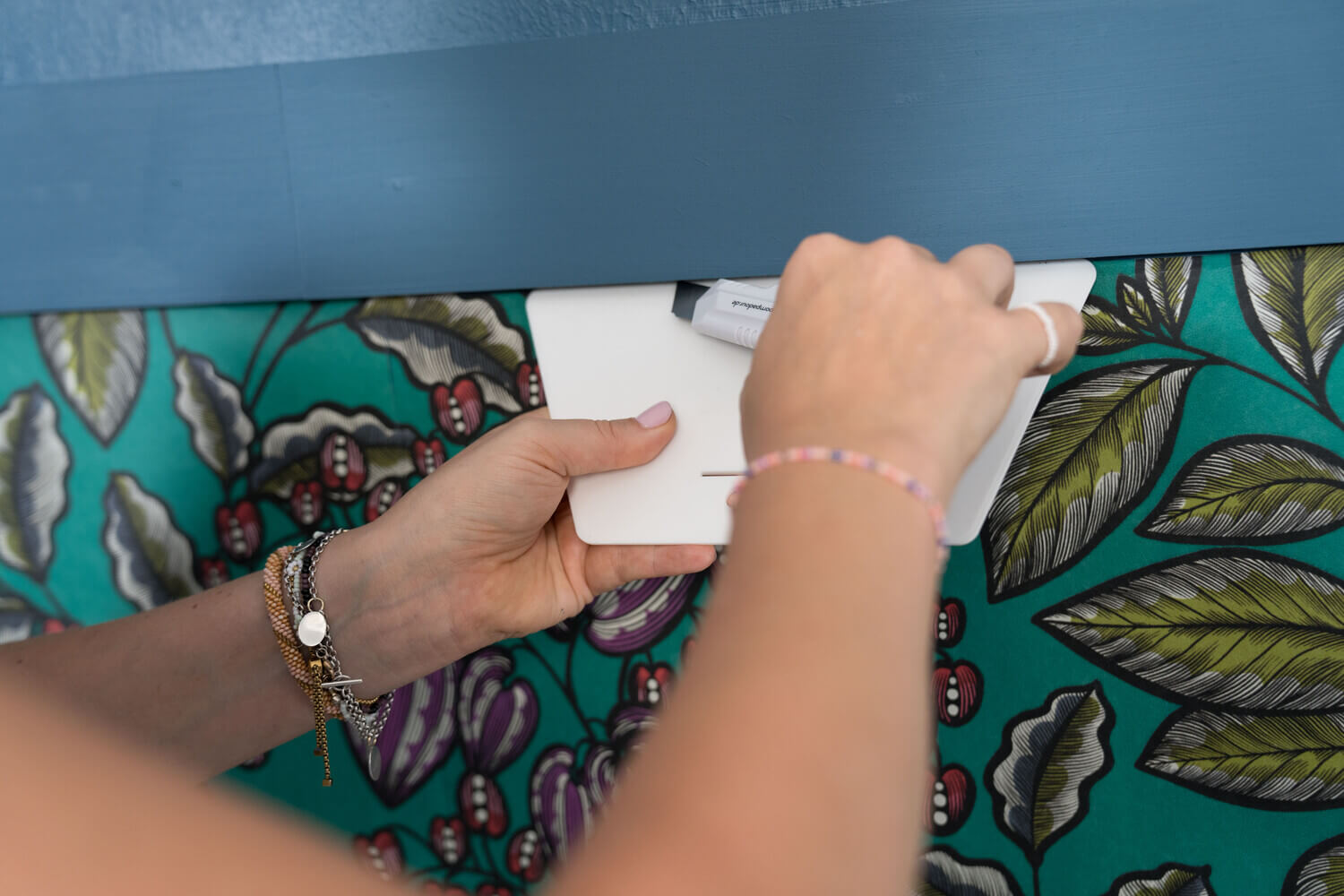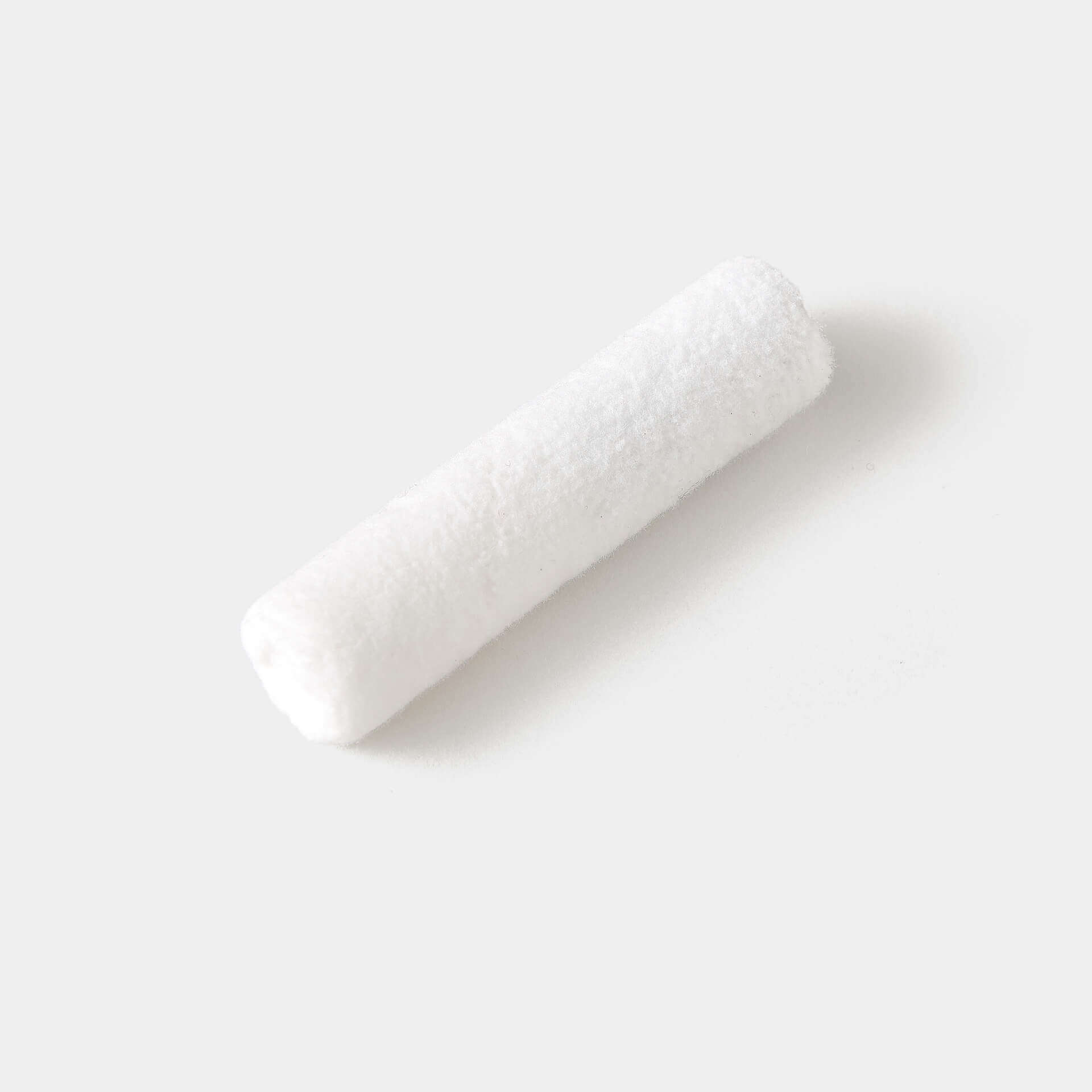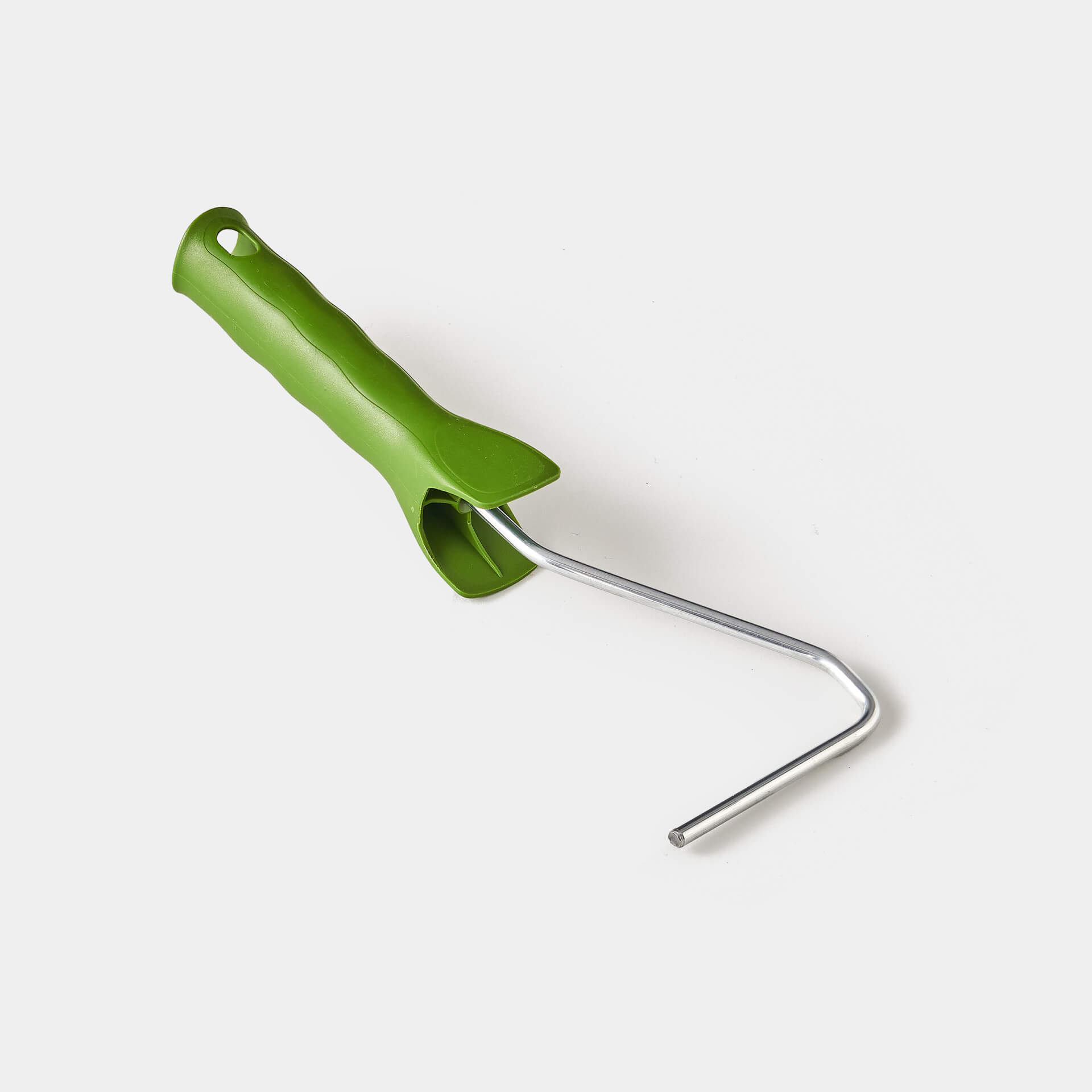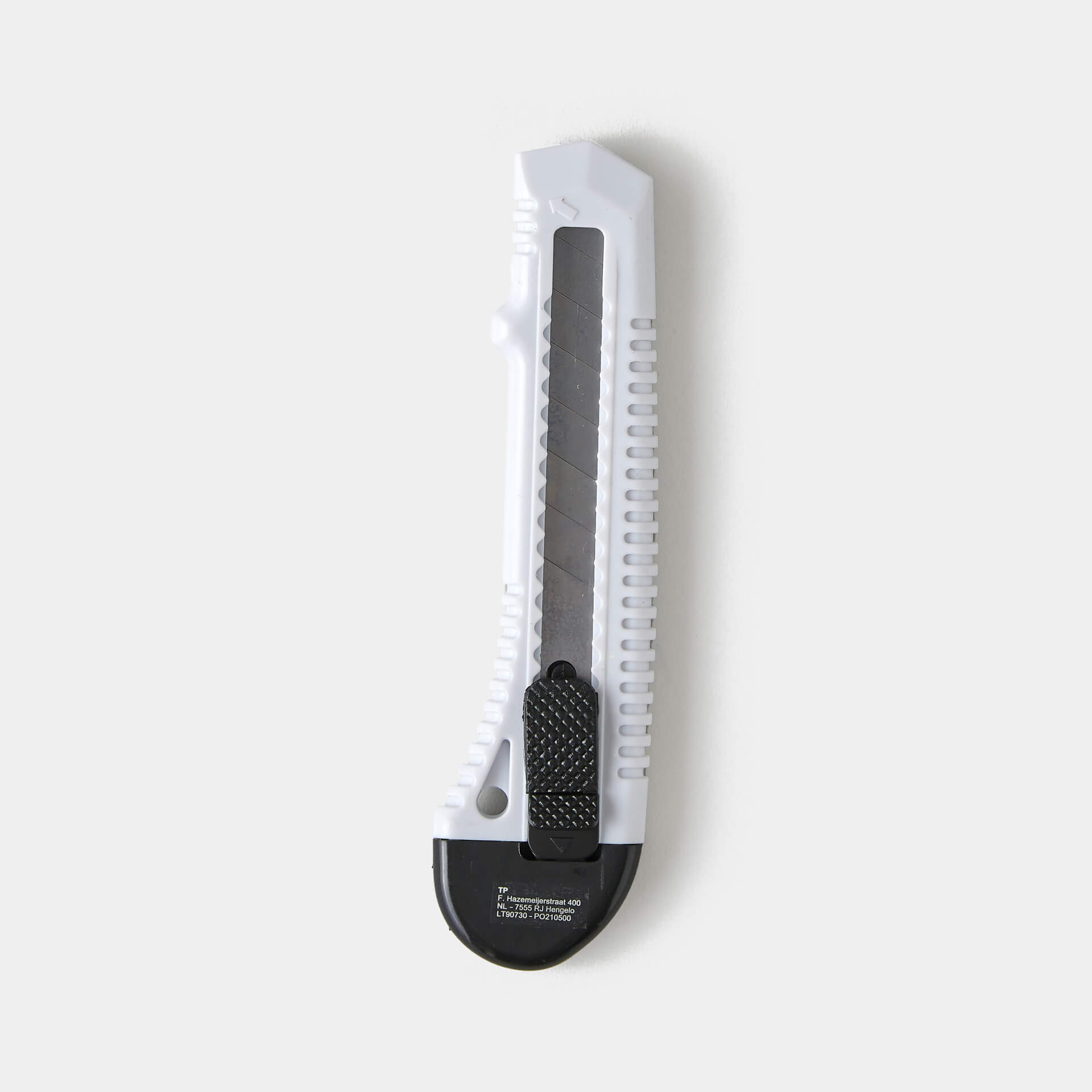Wallpapering non-woven wallpaper: The MissPompadour DIY Guide
In Products & Applications · 10 min reading time
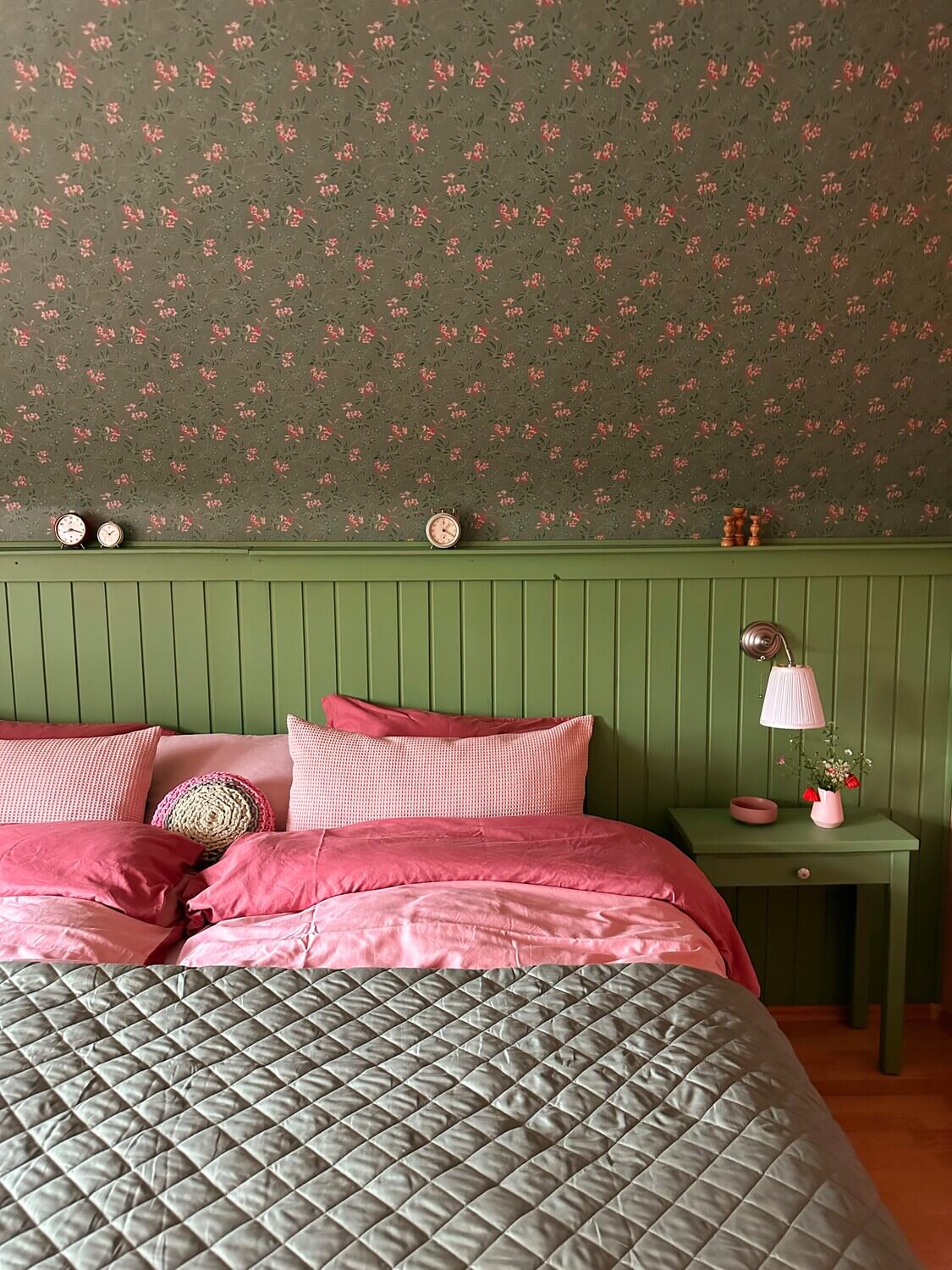
If you've already painted many walls, you know how to do it and you know every trick in the book. But wallpapering yourself? You might have some respect for that. But if you keep a few things in mind, it's not difficult at all. Especially if you have chosen a non-woven wallpaper from MissPompadour. Non-woven wallpaper makes wallpapering really easy.
Preparation before wallpapering
As with all crafts, preparation is half the battle. When it comes to wallpapering, this starts even before you buy the wallpaper: Measure your room/wall exactly and calculate how long a strip of wallpaper needs to be and how many strips and rollerrs you need in total for your project. You can work out exactly how to do this with our wallpaper calculator. As a rule of thumb, you can remember that one Rollers of wallpaper is usually enough for 3 strips. Nevertheless, it's better to calculate the exact amount you need!
Of course, you also need space to unroll the wallpaper roll for cutting. Maybe you have a table that is long enough for this. Otherwise, move furniture to the side and cut the wallpaper on the floor.
Removing old wallpaper
Is there already wallpaper on the wall? If they no longer adhere well, are wavy or broken, they definitely need to come down. Soak the wall properly and use a spatula to scrape off all the residue. After that, the wall must dry before you can continue. If your wall is not wallpapered, this step is of course not necessary.
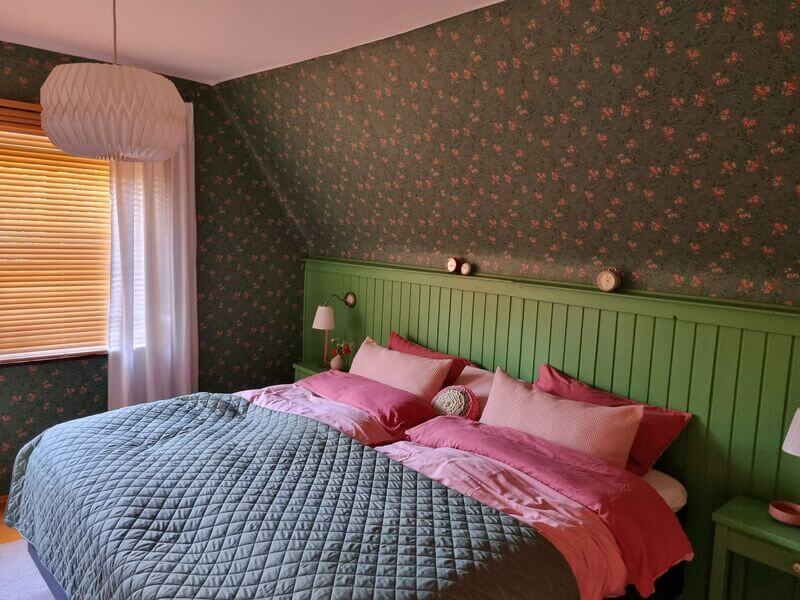
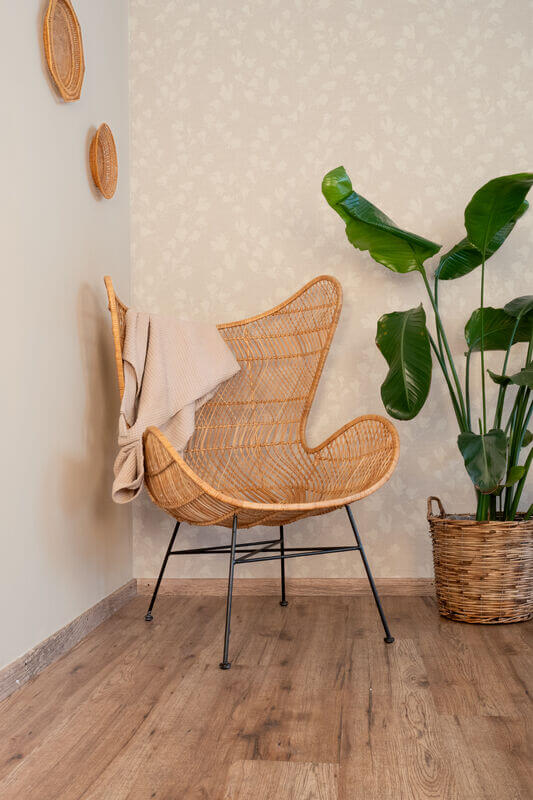
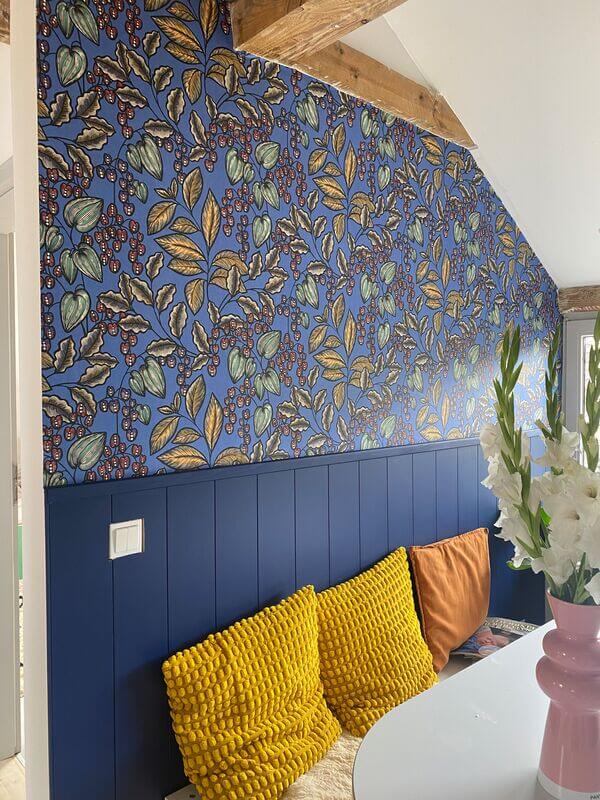
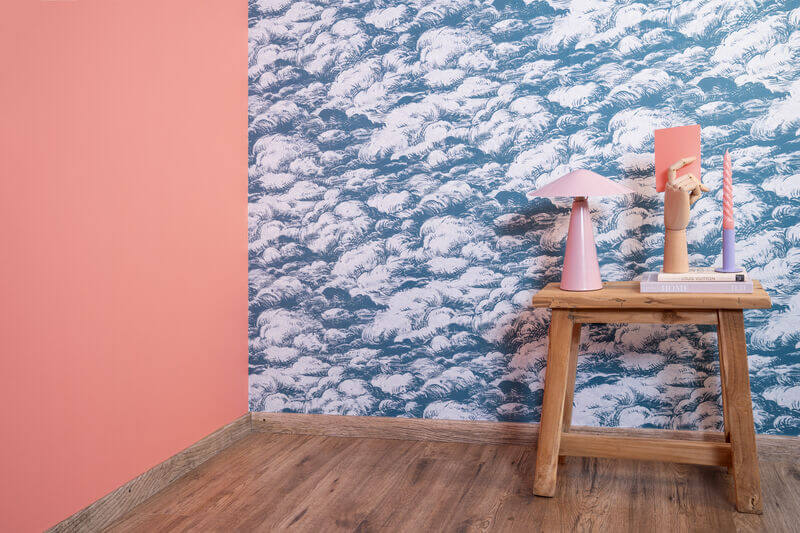
Prepare wall
Take a good look at your wall. A good surface for wallpapering is one that is even and smooth, such as smooth plaster or a nicely filled surface. Test a spot to see how absorbent the surface is. For highly absorbent surfaces, use a primer. MissPompadour To Prime Walls is the right product for this. Let the primer dry for a day before you start wallpapering. If the walls have plasterboard instead and appear sandy or crumbly, you must definitely prime them first. If you have a wall with roughcast or textured plaster, wallpapering is not recommended. Holes, large cracks and unevenness in the wall should be smoothed out with MissPompadour To Fill. Remember that the filler must be properly dry before you apply the paste to the wall.
Step by step to the optimal wallpapering result
If you follow this step-by-step guide, nothing can go wrong and you'll get what you imagined - a great wall.
Disposing of wallpaper remnants and paste - using environmentally friendly disposal options
You can do a lot with leftover non-woven wallpaper. Use them to give a cupboard a new interior life or brighten up the inside of a display cabinet with an attractive pattern. All DIY fans and hobbyists certainly have great ideas. But what if there are still leftovers? One thing is certain: non-woven wallpaper does not belong in the paper waste, but in the residual waste.
The mixed paste will keep for 1 to 2 weeks if it is kept well sealed. Then it starts to smell, because it consists of organic substances. The dried paste must also be disposed of in the residual waste, as it could clog sewage pipes. By the way, you can make great papier-mâché with the leftover paste.
Das brauchst du zum Tapezieren
Du benötigst einen speziellen Vliestapetenkleister. Außerdem brauchst du eine kurzflorige Rolle, um den Tapetenkleister aufzutragen. Da dieser ausschließlich auf die Wand und nicht auf die Tapete aufgebracht wird, ist eine Stange zum Verlängern deiner Rolle praktisch. Ein Andrückroller und vielleicht auch ein Nahtroller sind zu empfehlen. Mit ihnen kannst du mit leichtem Druck deine Tapetenbahnen an der Wand befestigen, nachdem du sie an Ort und Stelle geschoben hast.
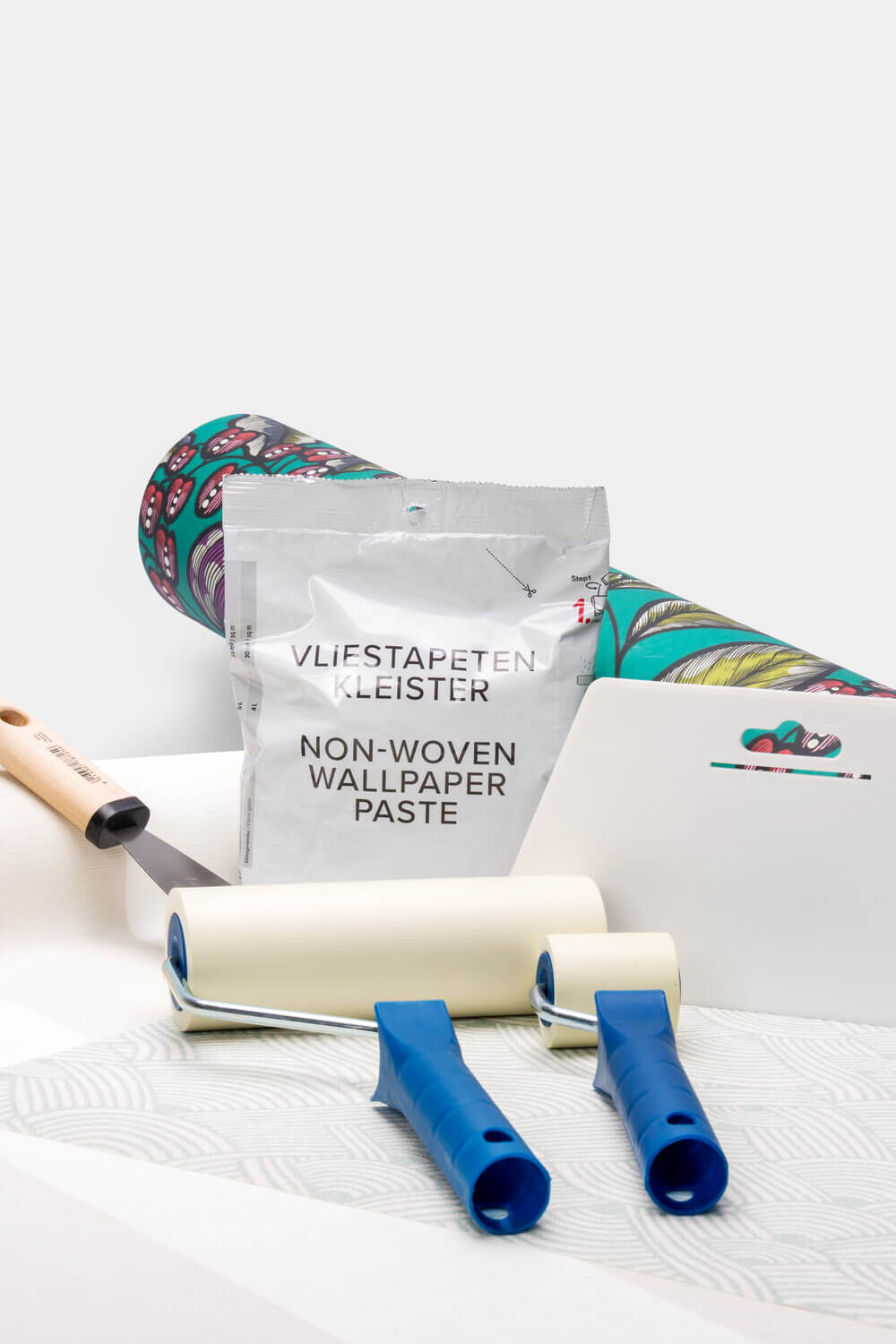
Hilfreich ist noch ein Tapezierspachtel. Mit diesem flachen, leicht trapezförmigen Werkzeug drückst du die Tapetenbahn an Decke und Fußbodenleiste an, um sie dann dort abzuschneiden. Dafür benötigst du ein Cuttermesser mit scharfen Klingen. Dazu kommen noch: Zollstock, Wasserwaage, ein Bleistift zum Anzeichnen. Und beim Tapezieren ist ein nasser Lappen hilfreich, um hervorquellenden Tapetenkleister sofort abzuwischen.
Accessories for your project
Here you will find everything you need for wallpapering
Questions & answers about wallpapering with non-woven wallpapers
The most common questions that arise when wallpapering can be answered quickly.
What do you have to bear in mind when wallpapering with non-woven wallpapers?
Non-woven wallpaper requires a special non-woven wallpaper paste. Non-woven wallpapers are not pasted, but the paste is applied exclusively to the wall. Non-woven wallpapers are butt-jointed.
Which paste do I need?
Only special non-woven wallpaper paste is used for wallpapering non-woven wallpaper. Non-woven wallpaper has a higher own weight and therefore needs a special paste. Mix the wallpaper paste according to the package instructions. Let it swell for about 5 minutes and then stir again.
With non-woven wallpaper, is only the wall pasted?
Yes, the paste only goes on the wall, the wallpaper stays dry.
Can non-woven wallpaper be painted over?
Existing non-woven wallpaper can generally be painted over. The wallpaper should be dry.
Which non-woven wallpapers are suitable for the ceiling?
Any non-woven wallpaper can be used on the ceiling.
Wallpapering non-woven wallpaper - where do I start?
Basically, you should always start with the first course in the middle of the wall. The corners of the room are rarely vertical. It is best to start in the middle of the wall after you have determined the vertical with a spirit level.
How are non-woven wallpaper remnants disposed of?
Non-woven wallpaper residues belong in the residual waste.
Where to put the rest of the paste?
Allow any leftover paste to dry and then throw it in the residual waste.
Can I wallpaper directly onto woodchip?
No, woodchip is itself wallpaper and also has an uneven surface. The woodchip must be removed without leaving any residue before you can wallpaper.
Does the old wallpaper have to be removed before wallpapering?
For best results, remove old layers of wallpaper.
Are non-woven wallpapers glued butt to butt or overlapping?
Non-woven wallpapers are glued butt to butt, as they do not contract when drying.
How do non-woven wallpapers differ from paper wallpapers?
Non-woven wallpapers and paper wallpapers differ only in their different backing materials. Non-woven wallpapers consist of a mixture of textile fibres and cellulose, the non-woven backing makes them particularly stable and tear-resistant. Paper wallpapers are mainly made of paper and can consist of thinner, thicker, single-layer or multi-layer paper.
Wallpaper glossary: all terms relating to non-woven wallpapers explained
- Roll : We speak of a wallpaper roll when a ceiling-high piece of wallpaper is cut from a Roller (taking the pattern into account in the case of patterned wallpapers). These strips are pressed next to each other onto the pasted wall.
- Pattern/ repeat: The pattern of a wallpaper is repeated at regular intervals. This distance is called the repeat. It is indicated in centimetres on every Rollers wallpaper.
- Staggered repeat: There are wallpapers whose repeat is enlarged and correspondingly more expressive by extending the pattern by half a repeat dimension. When cutting the panels, the pattern is always offset by half a repeat. Whether a repeat is offset is indicated in centimetres on the supplementary sheet for the Rollers wallpaper.
- Rollers : All MissPompadour wallpaper Rollers have the same format: the Roller is 10.05m long and 0.53m wide.
- Non-woven: All MissPompadour wallpapers are non-woven wallpapers. They have many advantages:
- The wallpapers are extraordinarily stable and do not tear.
- You do not have to paste them, it is sufficient to apply the paste to the wall.
- The base material of non-woven wallpaper consists of cellulose and textile fibres. It always keeps its shape when wallpapering. This means that the wallpaper does not shrink like paper wallpaper and can be easily butt-jointed.
- When changing wallpaper, non-woven wallpaper can be easily removed without leaving any residue, because the bond between the paste and the wall is less stable than the non-woven. In addition, non-woven wallpaper forgives small irregularities or cracks in the plaster.
- Last but not least, non-woven wallpapers are flame retardant and permeable to diffusion. This means they let your walls breathe.

